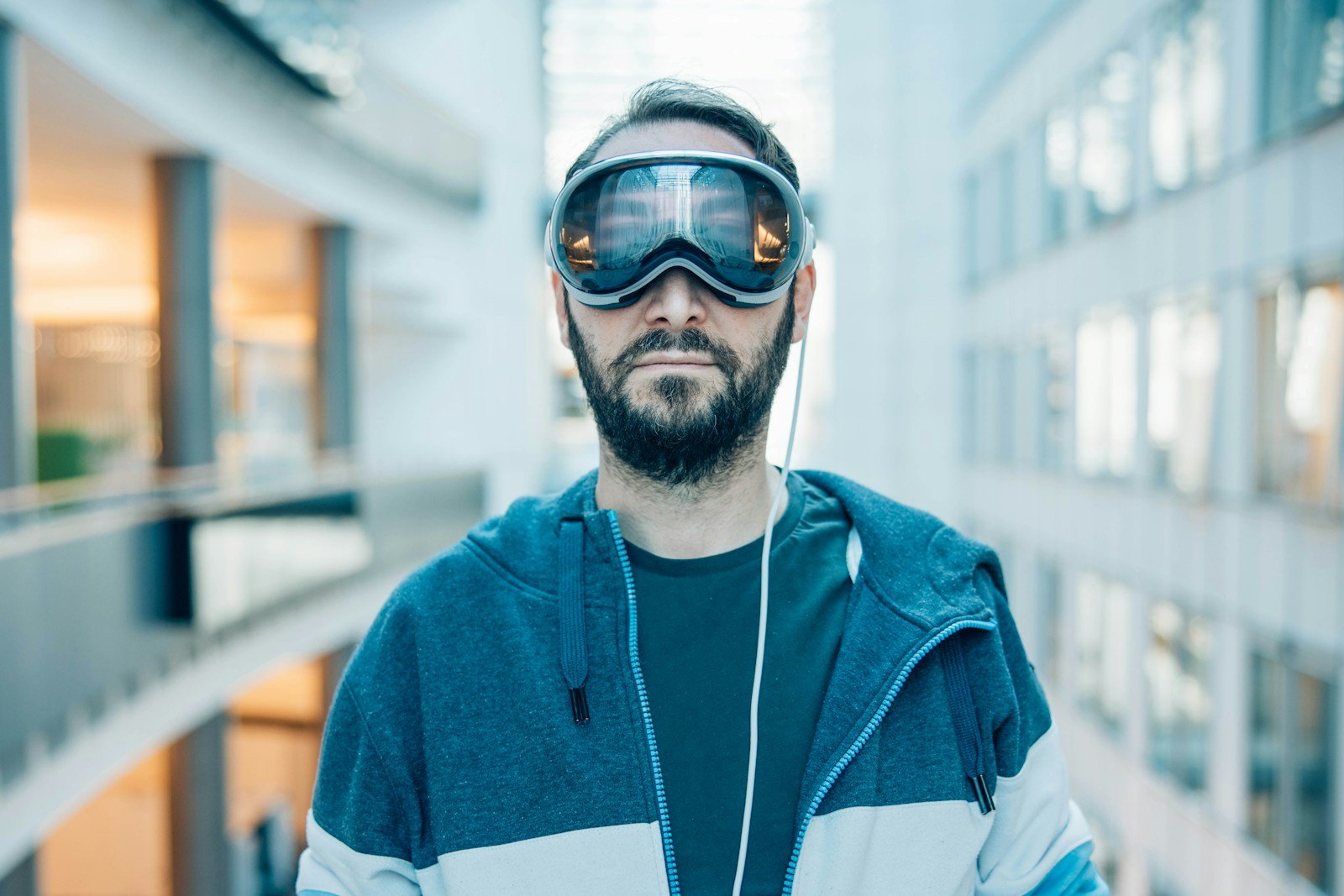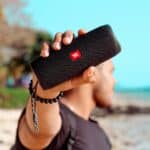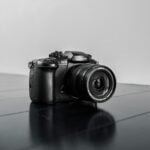Apple’s long-rumored ambitions for augmented and mixed reality are no longer just speculative — they’re materializing into a clear, multi-year strategy. According to a newly released roadmap from trusted analyst Ming-Chi Kuo, Apple is preparing a staggered rollout of XR products that will reshape the future of wearable computing from now through 2028.
From the high-end Vision Pro headset to lightweight smart glasses designed for everyday use, the company is plotting a methodical evolution that mirrors the iPhone’s rise — starting with premium hardware and expanding toward mass-market accessibility. This roadmap offers a rare glimpse into Apple’s product pipeline and hints at how the tech giant plans to gradually replace smartphones with spatial, hands-free computing. Here’s a breakdown of what’s coming, when to expect it, and why it matters.
Why This Matters
Apple rarely reveals long-term hardware plans, yet reliable supply-chain analyst Ming-Chi Kuo just mapped five distinct products that steadily shrink Apple’s mixed-reality hardware from a 600-gram headset to everyday glasses. The leak clarifies how Apple intends to transform the Vision line from an early-adopter showpiece into a mass-market wearable over the next four years.
Apple Vision Series & Smart Glasses Roadmap (2025–2028)
Vision Pro (XR headset) — continues from 2025.
Vision Air (lighter XR headset) — expected around 2027.
Ray-Ban-like smart glasses — around 2027.
Display accessory glasses — 2028 second half.
XR smart glasses — TBD (possibly after 2028).
⸻
Source: Ming-Chi Kuo, June 30, 2025.
2024-2026 · Vision Pro Era
- Continuous hardware refresh: An M5-powered revision is expected in 2025, with a 20 % lighter frame and improved micro-OLED efficiency.
- visionOS maturation: More than 2,000 native apps are already in the store, and Apple is courting AAA game engines alongside enterprise giants like SAP and Adobe to broaden use cases.
- Retail demos as marketing: In-store hands-ons reportedly convert at nearly double the rate of Apple Watch demo sessions in 2015, underscoring the headset’s experiential selling point.
2027 · Vision Air and First-Gen Smart Glasses
| Product | What Changes | Why It Matters |
|---|---|---|
| Vision Air | 40 % lighter than Vision Pro, fewer external cameras, single 4K micro-OLED per eye, target price under $2,000 | Moves Apple into the “advanced laptop” price tier, widening the addressable audience. |
| Ray-Ban-style Smart Glasses | No display; integrated speakers, dual 4K video cameras, Siri voice + gesture control | Competes with Meta’s Ray-Ban Meta glasses but leverages Apple’s ecosystem for hands-free capture, navigation and audio. |
Apple plans to ship both in the same calendar year to hit different price bands—mirroring its iPhone-Pro split strategy applied to spatial computing.
2028 · Display Accessory Glasses
- Tethered design: Lightweight frames wirelessly mirror iPhone, iPad or Mac displays at up to 120 Hz, effectively acting as “your private 4K monitor you can wear on a plane.”
- Power efficiency first: Off-board processing means multiday battery life is plausible, but the product is positioned as a productivity peripheral, not full AR.
After 2028 · True XR Glasses (TBD)
Kuo’s chart leaves the final “XR smart glasses” without a firm date. Industry sources say Apple needs breakthroughs in:
- Pancake or holographic waveguide optics that can fit into ordinary lenses.
- Sub-5 nm low-power Apple Silicon capable of ray-traced 3D at smartphone-like thermals.
- All-day batteries under 10 grams.
Most component suppliers predict those milestones land early next decade.
How Apple Is Laying the Groundwork Now
- Silicon roadmap: Apple’s in-house GPUs in the M-series now include hardware ray-tracing, a prerequisite for photorealistic passthrough AR.
- Sensor pipeline: The company reportedly secured nearly 60 % of global micro-OLED capacity for 2026–2027, squeezing rivals’ panel supply.
- Developer incentives: “Immersive Video Kit” grants and 0 % App Store commission for year-one Vision apps under $5 million in revenue aim to populate the ecosystem before Vision Air lands.
Competitive Context
- Meta Quest 4 is expected to cost under $500 in 2026, but early specs suggest only incremental optics gains.
- Samsung/Google XR partnership targets a Galaxy-class headset in 2026 using Qualcomm’s Snapdragon XR3, but lacks Apple’s vertical integration.
- Sony is pivoting PS VR2 toward PC compatibility, yet remains gaming-centric.
By staggering releases—premium today, lighter mid-range in 2027, peripheral glasses in 2028—Apple can iterate on components, grow the visionOS ecosystem, and educate consumers in stages. If Kuo’s timetable holds, the iPhone moment for mainstream AR likely won’t arrive until the early 2030s, but Apple is already paving the road.
Key Takeaways
- Apple Vision Pro demos are available for free booking at Apple Stores, allowing potential buyers to experience the technology before purchase.
- The device captures spatial photos and videos in 3D, creating more immersive ways to relive memorable moments.
- Vision Pro represents a significant advancement in spatial computing by seamlessly blending digital content with physical space.
Overview of Apple Vision Pro
Apple Vision Pro represents a groundbreaking step in spatial computing technology. This innovative device combines digital content with physical space, offering users an immersive experience through revolutionary technology and seamless integration.
Innovative Features of Vision Pro
The Apple Vision Pro features an exceptional display quality that delivers detailed visuals without noticeable pixels. Users report that while slightly less sharp than reality, the visual experience feels fluid and natural.
The headset functions as a spatial computer, blending digital elements with your physical surroundings. This creates an interactive environment where virtual objects appear to exist in your actual space.
One standout feature is the stress-free experience design. Apple has created a low-pressure environment for demos, allowing potential customers to explore the technology comfortably.
The device includes advanced eye-tracking technology that lets users interact naturally with content. This intuitive interface eliminates many traditional input methods.
Compatibility with Apps and Systems
Apple Vision Pro integrates seamlessly with existing Apple ecosystems. This compatibility ensures users can access familiar applications and content in a new, immersive format.
The system supports photo viewing capabilities that transform how users experience their personal media. Pictures can be viewed in a more immersive way than traditional screens allow.
Apple has developed specialized apps designed to take advantage of the spatial computing environment. These applications utilize the unique capabilities of the Vision Pro.
Video content receives special treatment in Vision Pro, with enhanced viewing experiences. The device creates a personal theater-like environment for watching movies and other video content.
While specific app details continue to evolve, the Vision Pro appears designed to work with both existing Apple software and new applications built for spatial computing.
User Experience and Applications
The Apple Vision Pro creates a fully immersive experience through innovative technology that responds to natural user movements. Users can navigate the spatial environment using their eyes, hands, and voice, creating an intuitive interface that feels both futuristic and surprisingly natural.
Spatial Video and Eye Tracking Integration
Eye tracking stands as one of the Vision Pro’s most impressive features. During demos, users quickly adapt to selecting items simply by looking at them and tapping their fingers together. This control method feels surprisingly natural after just minutes of use.
The device captures spatial video that adds depth to memories. Users can record moments that later appear as three-dimensional windows into past experiences.
Many demo participants report feeling a sense of wonder when apps and media content appear to float in their physical space. The boundaries between digital and physical worlds blur when watching movies on a screen that seems to expand beyond physical limitations.
Apps designed specifically for Vision Pro create new possibilities for interaction. From productivity tools that allow multiple virtual screens to entertainment apps that transform living rooms into immersive theaters.
Enhancing Accessibility with Face Scan
Before starting a Vision Pro demo, users undergo a face scan process. This customizes the device’s light seal to ensure proper fit and comfort during use.
The scan helps position the display at the optimal distance from each person’s eyes. This personalization prevents light leakage and enhances image clarity, which proves crucial for maintaining the immersive experience.
For those wearing glasses, Apple provides optical inserts that attach magnetically to the Vision Pro. This accessibility feature ensures clear vision without the discomfort of wearing both glasses and a headset simultaneously.
Some users initially express anxiety about the face scan, but Apple staff provide reassurance about data privacy. The company states that facial data remains secure and is used solely for fit customization.
Safety and User Consent
The Vision Pro demo includes clear instructions about potential motion sickness and when to remove the headset. Apple prioritizes user comfort by allowing breaks and encouraging users to move slowly when first navigating the spatial environment.
Demo facilitators obtain explicit consent before adjusting the headset on participants. This creates a respectful experience that acknowledges personal boundaries while helping users get the best possible fit.
The pass-through feature shows users their surroundings in real-time, reducing isolation anxiety. This transparency helps prevent accidents and makes the experience feel more connected to reality.
Privacy features include notifications when apps access cameras or microphones. Users maintain control over their experience with clear indicators of what information is being collected and how it might be used.
Frequently Asked Questions
Apple Vision Pro users often have questions about features, pricing, and trying the device before buying. These FAQs address common inquiries about this new mixed reality headset based on current information.
What are the features and improvements in the latest Apple Vision Pro model?
The Apple Vision Pro offers a mixed reality experience with gesture-based controls that don’t require external controllers. Users interact with digital content through eye movements, hand gestures, and voice commands.
The device features high-resolution displays that provide sharp visuals and depth perception. It runs on visionOS, Apple’s dedicated operating system for spatial computing.
Users can transform spaces around them, placing apps anywhere in their physical environment. The Vision Pro also allows for immersive video watching and productivity tasks.
When is the expected release date for Apple Vision Pro 2?
Apple has not officially announced a release date for a second-generation Vision Pro. The first model was released in early 2024, so a successor would likely come no earlier than 2025.
Apple typically follows annual or bi-annual update cycles for major products. However, for new product categories, the timeline between generations can be longer.
How much does the Apple Vision Pro cost in the United States?
The Apple Vision Pro is priced at $3,499 in the United States for the base model. This price point positions it as a premium device in the mixed reality market.
Additional storage options and accessories increase the price further. Prescription lens inserts are available at an extra cost for users who wear glasses.
Has the original Apple Vision Pro been discontinued?
No, the original Apple Vision Pro has not been discontinued. It remains Apple’s current mixed reality headset offering as of March 2024.
The device is still in its first generation, having only been released recently. Apple continues to support it with software updates and new features.
Where can customers find reviews for the Apple Vision Pro?
Customers can find reviews of the Apple Vision Pro on technology websites like ZDNET and MacRumors. These sites offer detailed analysis of the device’s performance and features.
Video reviews are available on YouTube from tech reviewers and channels dedicated to Apple products. These videos often show the device in action.
User reviews can be found on Apple’s website and in forums dedicated to Apple products. These provide real-world experiences from actual owners.
How can potential buyers schedule a demo for the Apple Vision Pro?
Potential buyers can schedule a one-on-one demo experience with a specialist at an Apple Store. This gives them hands-on time with the device before making a purchase decision.
Appointments can be booked through Apple’s website or by calling a local Apple Store. The demo process helps users understand how the device fits and functions.
Apple recommends scheduling demos in advance as availability may be limited due to high demand. The demo typically walks users through the main features and use cases.







